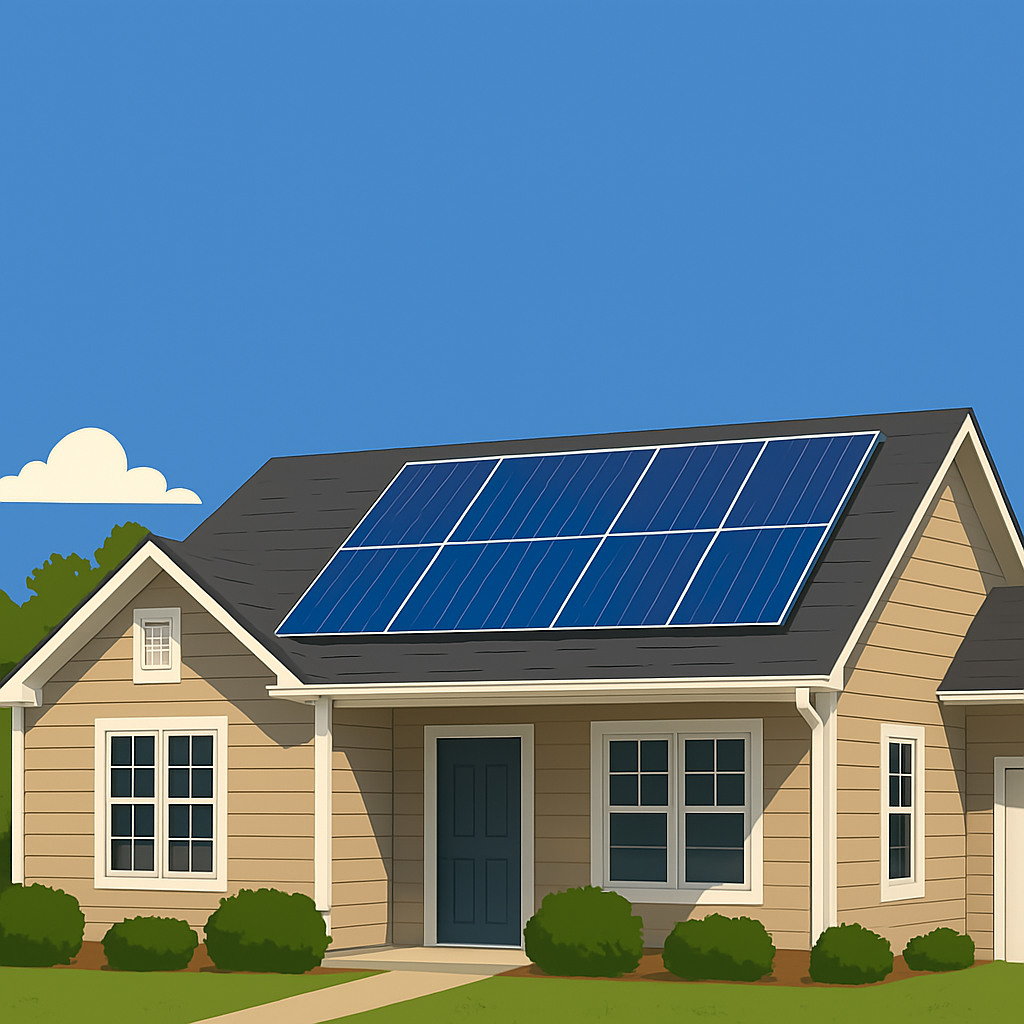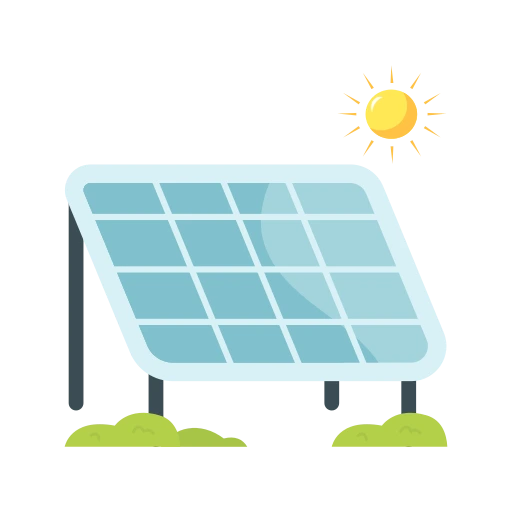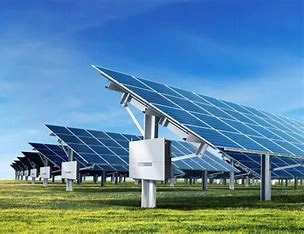OUR PROJECTS

Solar energy is one of the most common and greener sources of energy in homes in India. Residential solar / Rooftop panels help house owners control energy wastage, reduce their utility costs, and also promote cleaner architecture.
The majority of households install solar panels on rooftops to harness the rays of the sun and convert them into electricity. The advantages of using residential solar panels cannot be overemphasized because of the lower power consumption, reduction in pollution levels, and compliance with electricity cuts.
The advantages of using residential solar panels cannot be overemphasized because of the lower power consumption, reduction in pollution levels, and compliance with electricity cuts.
Types of Rooftop Solar Panel Systems
On-grid Solar Systems: The type of solar system that is grid-tied. The homeowners can also use such a system to spin the electricity meter backward as and when desired as they will sell green credits, further reducing electricity costs.
Off-grid Solar Systems: This system is suitable for places that are far from a power grid. It is worked off-geographically and does not rely on the grid, rather it uses batteries that charge up the system when there is sun available.
Hybrid Solar Systems: These systems allow users to take advantage of the good aspects of both on-grid and off-grid systems as users have an option to have grid on connection for household use while at the same time charging the batteries for backup. Such setups alleviate power interruption problems particularly when the grid is off.
Installation Process for Rooftop Solar Panels
chandanenterprises – the Fastest growing solar company in Bihar provides an equally efficient and easy rooftop solar panel installation process. Below is the process:
Site Inspection: The basic reason or aim of chandanenterprises inspecting the roof and the surroundings is mainly to know the position or the place of the solar panels and the dimensions of the system.
System Design: The solar panel requirements for the system would now be determined and a new solar panel system would be incorporated into the existing system to meet electrical energy needs.
Installation: Solar panels, solar inverters, and other equipment are professionally and safely mounted by certified installers.
Grid Connection: In the case of on-grid systems, the solar panel system is interconnected with the local grid in order to facilitate net metering.
Testing and Monitoring: A month after the installation has been done, the system will be checked for proper functioning and clients will be taught how they can track the energy that has been produced.
chandanenterprises offers complete assistance throughout the installation process and great customer support and service after the installation has been done ensuring extended durability of the system
Government solar panel scheme
The Indian government has various schemes to help fit solar energy in every strata of society. There are other state schemes such as the PM Surya Ghar Muft Bijli Yojana which assist in the installation of solar panels. Such programs enable homeowners to receive subsidies and other incentives,
Solar Services We Deliver
Solar System for Home
How does a solar plant work at home?
Solar panels on your roof capture sunlight.
They turn sunlight into DC electricity.
A solar inverter changes DC to usable AC power.
That power runs your home appliances.
Extra energy can be stored in batteries (optional).
If connected to the grid, surplus power goes back and can earn credits.
A smart app helps you track your energy use in real time.
What are the environmental benefits of solar energy?
Solar panels on your roof capture sunlight and convert it into electricity.
An inverter changes the power into a form your home can use.
It runs your appliances, lights, and devices throughout the day.
Batteries can store extra power for use at night or on cloudy days.
If connected to the grid, extra electricity goes back and may earn credits.
Solar energy is clean and green—it cuts pollution and reduces carbon emissions.
It also saves water, protects nature, and reduces reliance on fossil fuels.
What are the steps to install solar panels at home?
Check your power needs – Know how much electricity you use.
Inspect your roof – Make sure it gets enough sunlight and is strong enough.
Pick the right system – Choose on-grid (with utility) or off-grid (with batteries).
Get permissions – Apply for approvals and check for government subsidies.
Buy the setup – Purchase panels, inverter, mounts, and batteries (if needed).
Install panels – Fix the frames, place the panels, and connect the system.
Start and monitor – Turn it on, check if it’s working, and keep it clean regularly.
Solar System for Hospitals
How Does a Solar Plant Work in a Hospital?
Solar panels capture sunlight and convert it into usable electricity for hospitals through an inverter.
This clean energy powers critical systems like lights, medical equipment, and HVAC, with optional battery backup.
Excess power can be sent to the grid, and smart monitoring ensures efficient energy use and savings.
What are common challenges in installing solar panels in hospitals?
Installing solar panels in hospitals is tricky due to their high power needs and complex infrastructure.
Limited roof space, high upfront costs, and strict regulations add to the challenge.
Systems must be reliable, integrate with existing backups, and be maintained regularly, all while handling weather and space limitations.
Solar System for Schools
Environmental Benefits of Solar Energy in Schools
Reduces Carbon Emissions: Schools can lead sustainability efforts by cutting down their environmental footprint.
Promotes Clean Air: Solar power eliminates air pollution caused by traditional energy sources, improving air quality for students.
Encourages Energy Independence: Schools become less reliant on the grid, ensuring stable electricity during outages.
Saves Water Resources: Unlike conventional power plants, solar requires minimal water usage.
Educates Students About Renewable Energy: Schools can integrate solar energy concepts into science and environmental studies.
Enhances Community Sustainability: Schools that adopt solar power can inspire local residents to consider renewable energy.
Solar System for Agriculture
What Are the Challenges of Implementing Solar Energy in Agriculture?
Setting up solar panels in hospitals isn’t easy because they need a lot of power and have critical systems that can’t be interrupted.
There’s often not enough space on the roof, and the initial costs can be high, even though it saves money in the long run.
Hospitals also need to follow strict rules, work around existing power backups, and ensure the system runs smoothly all the time—even when it’s cloudy.
Solar System for Factories
How Can Factories Optimize Solar Energy Efficiency?
Factories can boost solar energy efficiency by placing panels where they get maximum sunlight, using high-quality inverters, and keeping panels clean.
They can also add battery storage, monitor energy use in real-time, and schedule heavy machinery to run during peak sunlight hours.
Solar System for Public Infrastructure
How do solar plants contribute to sustainable public infrastructure?
Solar plants play a crucial role in creating sustainable public infrastructure by providing clean and renewable energy while reducing environmental impact. Here’s how:
Lower Carbon Footprint: Solar power generates electricity without emitting greenhouse gases, helping cities and communities reduce their reliance on fossil fuels.
Cost Savings: Once installed, solar energy significantly cuts electricity costs for public facilities like schools, hospitals, and government buildings, freeing up resources for other essential services.
Energy Independence: With solar plants, public infrastructure becomes less dependent on centralized power grids, ensuring resilience during power outages or energy shortages.
Scalability & Versatility: Solar installations can be adapted to various public spaces, from parking lots and bus stops to water treatment facilities, making sustainable energy widely accessible.
Environmental Preservation: By reducing reliance on conventional energy sources, solar plants help mitigate air and water pollution, contributing to healthier urban environments.
Why Choose Solar Energy?

Save Money
Reduce or eliminate your electricity bills with solar power. Most systems pay for themselves in 5-7 years.

Eco-Friendly
Solar energy is clean, renewable, and reduces your carbon footprint by up to 80%.

Increase Home Value
Reduce or eliminate your electricity bills with solar power. Most systems pay for themselves in 5-7 years.

Energy Independence
Reduce or eliminate your electricity bills with solar power. Most systems pay for themselves in 5-7 years.

Government Incentives
Reduce or eliminate your electricity bills with solar power. Most systems pay for themselves in 5-7 years.

Reliable Power
Reduce or eliminate your electricity bills with solar power. Most systems pay for themselves in 5-7 years.
Our Solar Installation Process
Simple steps from consultation to energy production

Comprehensive Solar Solutions
Our end-to-end service ensures your solar system is perfectly matched to your energy needs and architectural requirements.
- 🟡 FREE CONSULTATION: Personalized energy assessment and custom system design—100% free.
- 🟢 PERMITTING MADE EASY: We take care of all local permits and approvals.
- 🔧 PROFESSIONAL INSTALLATION: OSHA-trained, certified technicians handle everything safely.
- ✅ QUALITY INSPECTION: Rigorous testing ensures your system is ready to perform.
- ⚡ UTILITY CONNECTION: We coordinate directly with your power company for activation.
- 📊 REAL-TIME MONITORING: Keep track of your system’s performance anytime, anywhere.
Ready to Go Solar?
Join thousands of satisfied customers who are saving money and helping the environment with
solar energy. Get your free, no-obligation quote today!
